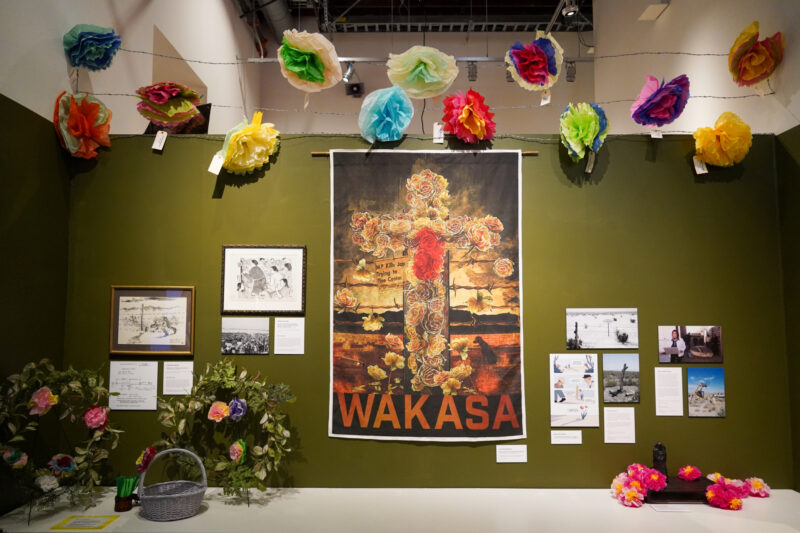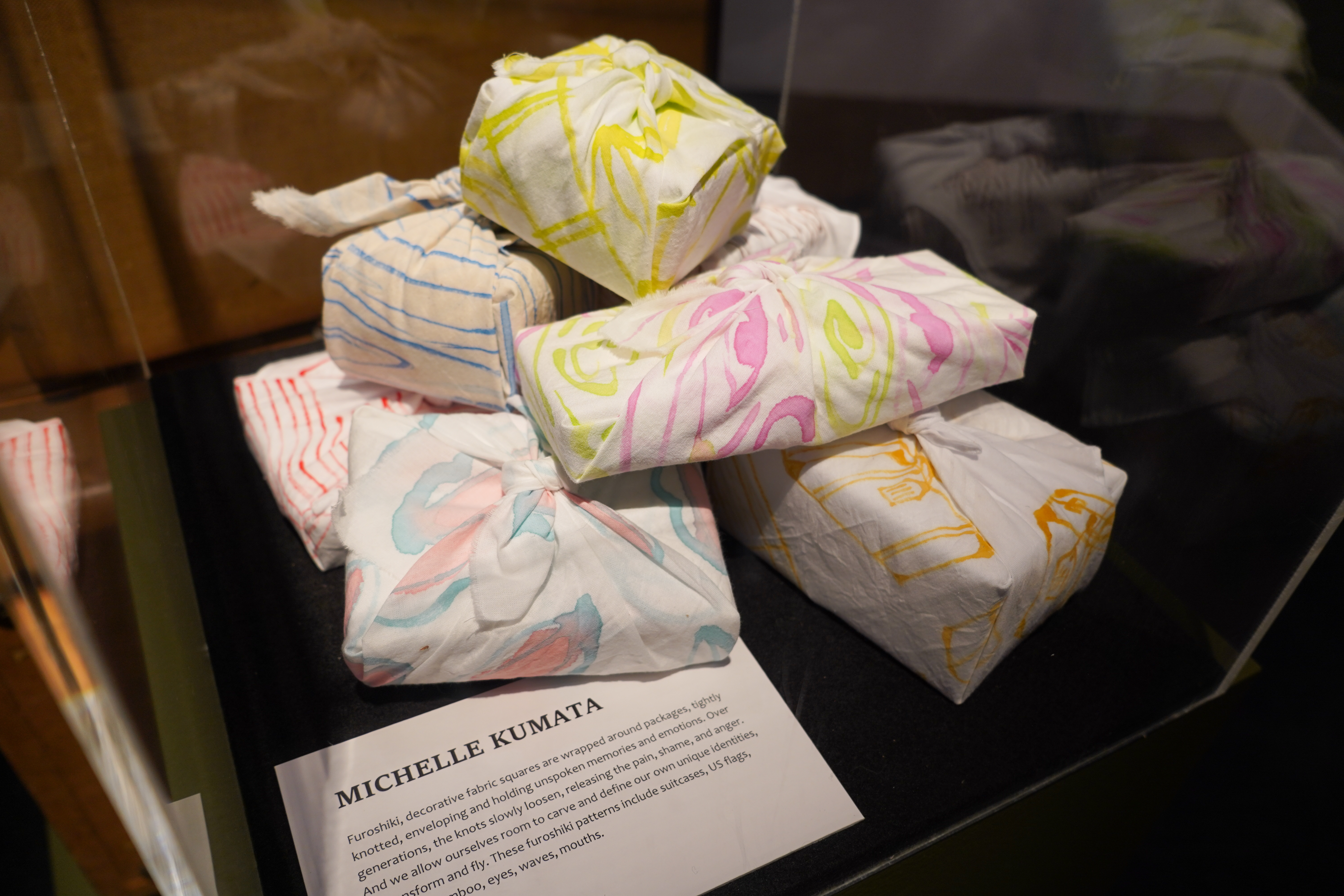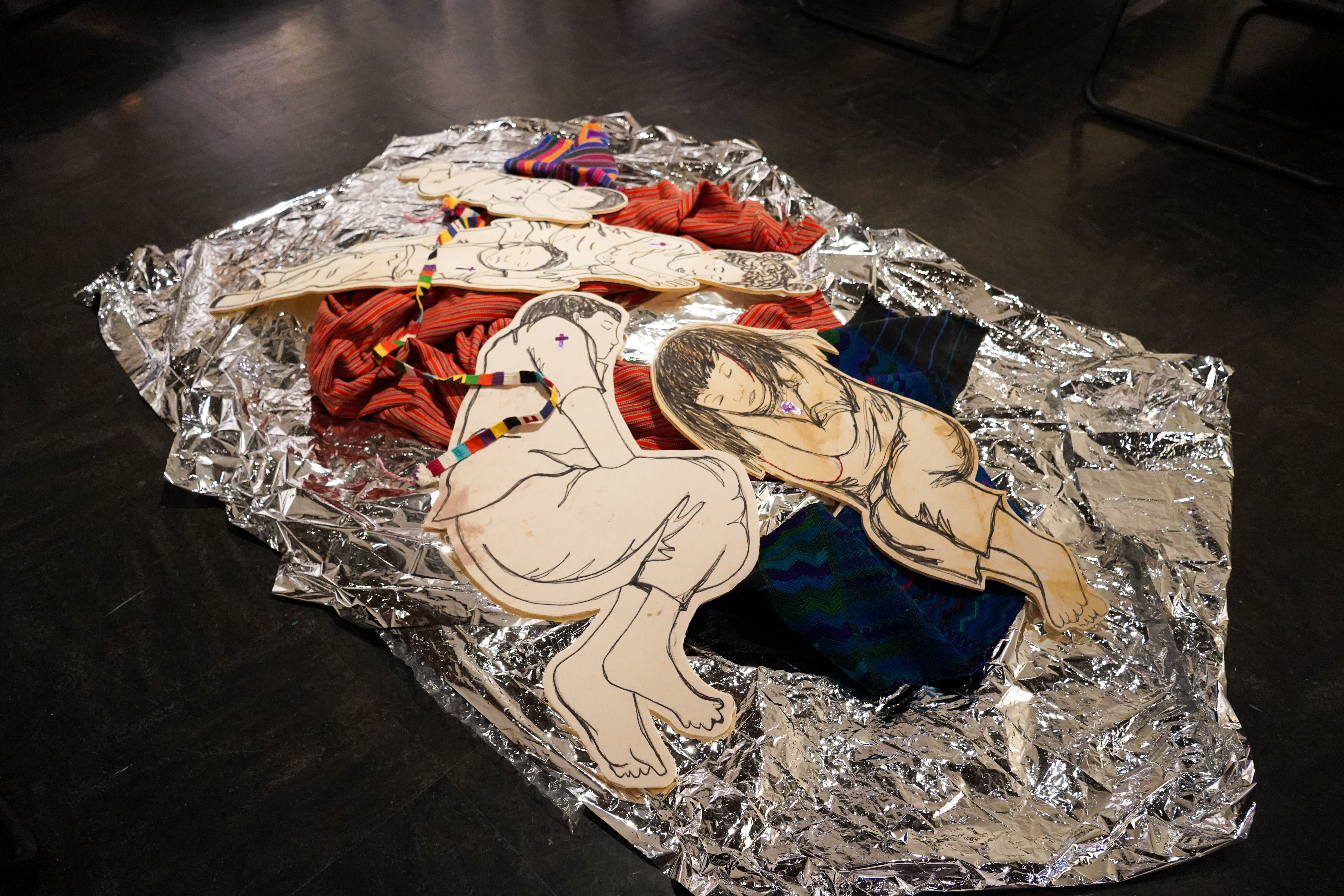A Legacy of Internment & Immigration Detention
Review of Resisters: A Legacy of Movement from the Japanese American Incarceration presented at the Wing Luke Museum
Written by Teen Writer Maitreyi Parakh and edited by Teen Editor Esha Potharaju

Resisters: A Legacy of Movement from the Japanese American Incarceration is an unintentionally misleading gallery. The impersonal nature from which history is often told is drastically subverted in this exhibit, featured at the Wing Luke Museum of the Asian Pacific American Experience from October 14, 2022, to September 17, 2023. The gallery is a special exhibition designed by Scott Méxcal, written by Tamiko Nimura, and developed by Mikala Woodward. The exhibit is structured similarly to a maze, where you—placed into the shoes of Japanese Americans facing these aggressions—are led through the passage of time without being able to anticipate what will come up next.
Stories in history that are fraught with tragedy are often dulled down into easy, comprehensible individual values when they are retold. Retellings frequently pick and choose their facts simply by virtue of being a retelling. It would be impossible to cover every single event without meticulously recreating it step by step, as some parts are naturally lost over time. To only cover the certain pieces of the exhibit that remain would be an injustice to all the stories left untold—and to cover the entire exhibit as if it is a holistic record of internment camps would do the same. Instead of picking and choosing a few specific stories, this exhibit and review ask the viewer to put themselves through the experience of internment and view each possible story offered through their own lens. You can hear the recorded testimonies throughout the exhibits echoing through history, just as the exhibit is set up as a timeline that prevents you from seeing what's left to come.
The exhibit begins with you entering a room filled with remnants and testimonials from and about internment, which lasted from 1942 to 1946 after Japan bombed Pearl Harbor and Japanese-American citizens were persecuted as a result. Your name is now a five-digit number, your fingerprints on government record, your home a converted horse stall or a tar-papered barrack.

A display at the center features the casualties of pre-internment life: the loss of identity expressed through a mountain of suitcases and furoshiki by Michelle Kumata. The furoshiki are, in the artists' own words,
"decorative fabric squares … wrapped around packages, tightly knotted, enveloping and holding unspoken memories and emotions. Over generations, the knots slowly loosen, releasing the pain, shame, and anger. And we allow ourselves room to carve and define our own unique identities, to transform and fly. These furoshiki patterns include suitcases, US flags, barracks, bamboo, eyes, waves, mouths."
Behind is a wall of origami flowers, allowing you to pay respect to the victims before you pass through an opening to the years after internment.
One wall of images wouldn't be enough to tell every story created during internment. The featured stories ask us to think about Japanese Americans' responses and re-evaluate what we think we know about the stories that have already been told. What else does resistance look like here? There were many responses never captured for the public. Those who slammed a fist into a palm, or a door. Those who were afraid of the uncertainty, the hostile climate of the United States. Those who burned their family pictures and Japanese papers, trying to avoid any hint of "disloyalty." Though the resistance featured in this exhibit is primarily written or preserved, resistance as a whole cannot be summarized in one place—it would be an erasure of the experiences "never captured for the public." An overwhelming number of accounts have been told about how resistance against dehumanization challenges the surface level assumptions about what resistance looks like. These stories should continue to be communicated to counter ideas on how a society can and did react to injustice on such a broad scale.
The wall opens out onto an unexpected scene, showcasing a dream refuge for the children. Various life-size figures are printed onto the canvas covers of physical cots, with images of the children on a mat in the center and a tree of visitors' current hopes in the corner. This portion of the exhibit allows you to see the following years of internment as they work congruously to discuss the lasting impacts of incarceration on Japanese Americans and the current state of immigration detention respectively. It integrates you and asks you to take action, to prevent repeating the same lack of resistance seen in the past. An AR (Augmented Reality) piece of the exhibit immerses you further into the experience as you go from thinking of a specific past to the collective future. Resisters encourages you to step away from isolation and work to understand the interconnectedness of history and current, past and present—and the implications for the future.

You've arrived at the ending, which is also a beginning. [...] If we have done our work, you will take a stand. Write a letter, a poem, a petition. Make a sign, a speech. Organize with communities who are already doing the work. Create where others would destroy. Speak with your power to those in power. Teach others about your story and connect it to other stories, other communities.
Lead Photo: taken by Max Chan
Italicized sections are direct quotes from the gallery, written by Tamiko Nimura.
The TeenTix Newsroom is a group of teen writers led by the Teen Editorial Staff. For each review, Newsroom writers work individually with a teen editor to polish their writing for publication. The Teen Editorial Staff is made up of 6 teens who curate the review portion of the TeenTix blog. More information about the Teen Editorial Staff can be found HERE.
The TeenTix Press Corps promotes critical thinking, communication, and information literacy through criticism and journalism practice for teens. For more information about the Press Corps program see HERE.


